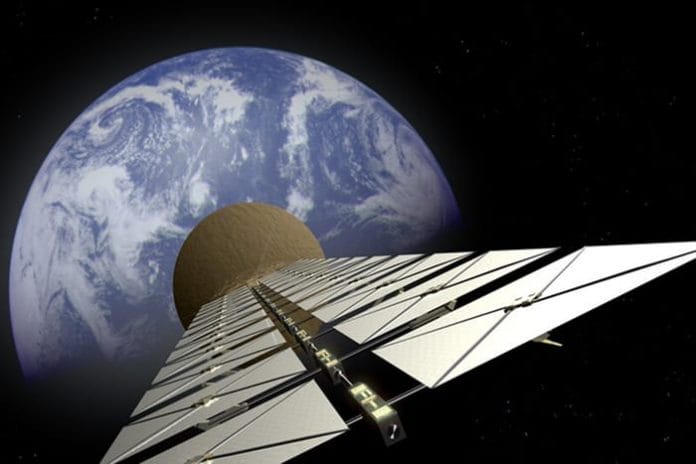
Dear EarthTalk: How feasible is creating orbiting solar plants that can beam energy down to Earth? If it’s possible, when can we expect to see such tech implemented?
– P.R., via email
by Liv Konen, EarthTalk
In the 1941 short story Reason, science fiction author Isaac Asimov introduces a space station that produces energy by sending microwave beams to the planets. This concept is closer to reality as international space programs and research labs test the technology necessary to bring it to life. Traditional solar technologies convert sunlight into usable energy here on Earth. However, their use is limited to daytime hours and restricted by weather and geography. The idea of an orbiting solar plant bypasses these restrictions, allowing energy harvesting above the clouds.
There are different designs, but the principles are similar: A large satellite transforms solar power into electricity using photovoltaic cells made of material that generates voltage and electric current when exposed to light. The power is then beamed down to earth by microwaves (or lasers) to dedicated receiving stations that turn the energy back into electricity to get fed into the local grid.
Entities such as the European Space Agency (ESA), Space Solar (a start-up in the UK), and the California Institute of Technology are investing in launching this type of project. Besides the obvious benefit of having all sun, all the time, orbiting solar plants have various other benefits. There are no dangerous byproducts as there are for other energy production methods: no fly ash from coal or radioactive waste from nuclear power. Solar is entirely renewable—it will not run out in the age of humanity—so it is harmless and could help limit the impacts of climate change if adopted on a global scale.
So why don’t we already have these power-generating stations orbiting in space? There are still challenges to overcome. The cost is prohibitive; the structure would need to be about 2,000 metric tons (roughly equivalent to the weight of 286 male African elephants) and need to be a mile and a quarter in diameter, with a little over a half-mile-long transmitter. Another challenge is engineering, particularly the parts used for such power-beaming structures. Given the difficulty of reaching the satellites for maintenance and repairs, it is suggested that parts must withstand at least 15 years in space. Additionally, there’s a need to improve the efficiency of current wireless power transmission to ensure that all the energy can be collected down on Earth.
There are some significant drawbacks, too. Solar plants orbiting closer to Earth would transmit energy more easily, but light pollution would be difficult for humans, flora and fauna to cope with. Research also suggests that exposure to artificial light at night can increase health issues in humans, including obesity, depression, diabetes, and more.
Whether Asimov’s proposal from nearly a century ago will be implemented remains to be seen. The ESA has recently sought ideas to make it more feasible. “The potential of this concept to contribute to long-term sustainable energy is very high,” says ESA Engineer Advenit Makaya. For the time being, you can invest in solar power on Earth and keep your eyes on the sky as the technology advances and costs drop.

